
April 1, 2007
 The Comics Reporter’s Top 50 Comics Publications for the Calendar Year 2006
The Comics Reporter’s Top 50 Comics Publications for the Calendar Year 2006

Here are my choices for the top 50 books of 2006, an extraordinary and deep year in comics publishing. These are English-language books with the single exception of a webcomic (and thus accessible from North America) that I've been able to enjoy with rudimentary knowledge of French. I could rattle off another 25 books, series or single efforts nearly as good as the ones on this list, and there are a few books in the 40s that I could conceivably see in the top 10 if I were to approach the project in a slightly different way. It's that kind of year.
I realize that ranking art is silly, but I include the numbers because putting together a big list of books you like in alphabetical order is so easy to do, and so easily avoids the more difficult questions, I'm not sure it's worth doing. I really do value the #1 book here more than the others, and numbering them is the easiest way to communicate to you which works I think more of than others. I also feel like every so often you should make a list because it helps people to tell how much or how little they should on a day to day basis trust your opinion.
As for comics not on here: I'm pretty well read when it comes to comics, but I haven't read
everything. I've also skipped a couple of serials that are difficult for me to access in favor of catching up with them in collected form (the
New York Times Sunday Magazine material, most notably). In addition, I'm a bit behind on my traditional manga series reading, although in a year when so many works made a definite, sharp impression, it proved very difficult for series offerings to generally match that energy and impact and make it onto the list, so I'm not sure that made a big difference.
I'm also sure I just forgot a couple. (And to get the traditional warning out of the way: some of those selected are advertisers; many were selected despite never advertising with
CR and making me cry; some advertisers weren't selected, for which I hope they'll forgive me.)
As always, I'm happy to try and answer any questions sent
.(JavaScript must be enabled to view this email address) as to particular entries and omissions. I'll likely ignore any raised eyebrow-style letters along the lines of "What about THIS COMIC, you stupid goon?" The nature of the exercise is that in most cases this comic or that comic just didn't make this list. I hope that you'll take the overall effort for what it's worth: one reader's impression of the best of an incredible year.
For other Best of 2006 lists, go to
this Collective Memory entry.
*****
 50 -- Elmer (series) by Gerry Alanguilan, Komikero
50 -- Elmer (series) by Gerry Alanguilan, Komikero
In cartoonist and historian Gerry Alanguilan's series, sentient chickens march through domestic dramas and the larger, creepier saga of their sudden self-awareness, restoring to comics the independent comics formula of genre work, personal expression and attention to craft
*****
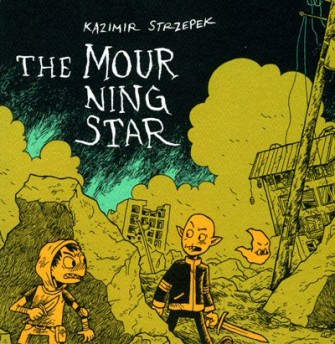 49 -- Mourning Star, Kazimir Strzepek, Bodega
49 -- Mourning Star, Kazimir Strzepek, Bodega
It's hard to tell if
Mourning Star is a throwback to indy comic book world-building and the value of mixing genres in vibrant, old-school fashion or if it's a harbinger of a new wave of fantasy comics made for the post-Fort Thunder world. What it definitely is is funny, energetic and unpredictable.
*****
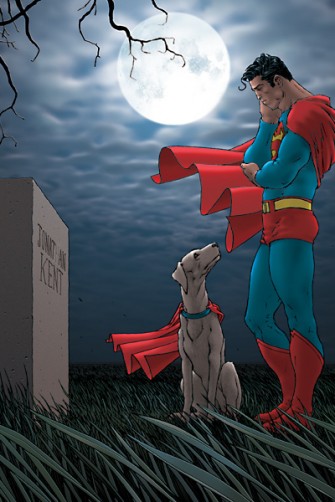 48 -- All-Star Superman (series), Grant Morrison, Frank Quitely, DC Comics
48 -- All-Star Superman (series), Grant Morrison, Frank Quitely, DC Comics
The most appealing part of Grant Morrison and Frank Quitely's compression of all of DC's 1950s and 1960s comics into a single storyline is its essential awkwardness, and how that's reminiscent of the way that Mort Weisinger and the other editors drove home these absolutely bizarre stories with a straight face, never letting up, until their stiff-upper-lipped insanity became a new baseline.
All-Star Superman knows it is grand and ridiculous and that it's going to rattle at the far end of its own, limited messages, and is all the better for it.
*****
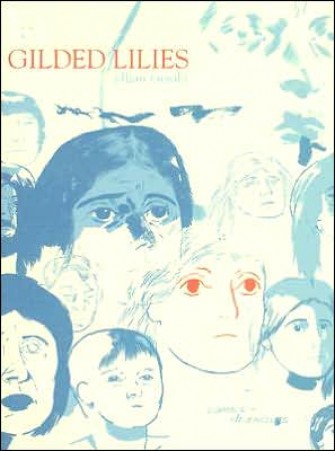 47 -- City of Champions, Gilded Lilies, Jillian Tamaki, Conundrum Press
47 -- City of Champions, Gilded Lilies, Jillian Tamaki, Conundrum Press
Although "The Tapemines" was this book's most ambitious effort, I adored the volume's initial short story, a tribute in words and (mostly) beautifully realized pictures to the great city of Edmonton, in all of its big-shouldered, hockey-obsessed glory. A strong book overall.
*****
 46 -- Solo #12, Brendan McCarthy, DC Comics
46 -- Solo #12, Brendan McCarthy, DC Comics
The end to DC's one-man single-showcase anthology title throws its spotlight on an under-appreciated artist who proceeds to do all sorts of horrible things to the milieu, the characters and the iconography, almost like he's holding the entire company hostage.
*****
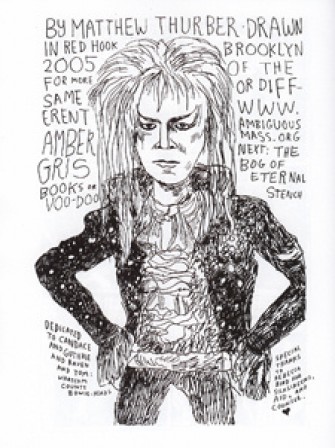 45 -- What Kind of Magic Spell to Use, Matthew Thurber, Self-Published Mini
45 -- What Kind of Magic Spell to Use, Matthew Thurber, Self-Published Mini
The descriptive blurb reads, "The comic book which tells the history of the recording sessions of the
Labryrinth soundtrack." It's even better than that sounds, and that sounds pretty awesome. The one mini-comic I remember above all others this year.
*****
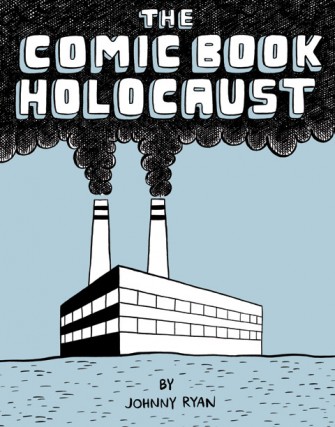 44 -- The Comic Book Holocaust, Johnny Ryan, Buenaventura Press
44 -- The Comic Book Holocaust, Johnny Ryan, Buenaventura Press
Johnny Ryan's cartoons are like the funniest notes you've ever been handed in the back of English class, except they're written and drawn by a comedic super-genius. The relentless idiocy of this offense-driven volume -- a source of humor in and of itself -- is leavened by inspired, mean, but in the end self-aware pairings and takes, like dragging Art Spiegelman into a parody of
Super-Villain Team-Up.
*****
 43 -- The Perry Bible Fellowship, Nicholas Gurewitch, Self-Published (On-Line)
43 -- The Perry Bible Fellowship, Nicholas Gurewitch, Self-Published (On-Line)
Still consistently funny; the art gets better all the time, and is always put to good use, by which I mean the potency that Gurewitch achieves with a visual adds to the effectiveness of the joke.
*****
_thumb.jpg) 42 -- Ed the Happy Clown by Chester Brown, Drawn and Quarterly
42 -- Ed the Happy Clown by Chester Brown, Drawn and Quarterly
The best comics reprint project in a long time, an immaculately designed series and almost enough all by itself to make me wish the arts-comics market was trending in the direction of single comics issues. The story is still a killer, too.
*****
 41 -- Tamara Drewe, Posy Simmonds, The Guardian (On-Line)
41 -- Tamara Drewe, Posy Simmonds, The Guardian (On-Line)
I may change my mind once I read the whole thing, but the periodic updates on-line left me aching to have it all in one place.
*****
 40 -- Sloth, Gilbert Hernandez, DC/Vertigo
40 -- Sloth, Gilbert Hernandez, DC/Vertigo
Gilbert-in-one, which puts a greater emphasis on theme than character, and one of the best tributes to the toolkit of another artist's work (David Lynch) that you're likely to see in comics form.
*****
_thumb.jpg) 39 -- Trauma on Loan, Joe Sacco, The Guardian (On-Line)
39 -- Trauma on Loan, Joe Sacco, The Guardian (On-Line)
A situation specifically miserable and on the face of it absurd in so many, many ways that by the end of this short story the events manage to thwart Sacco's usually dependable, even-handed sorting of the facts, to fascinating effect.
*****
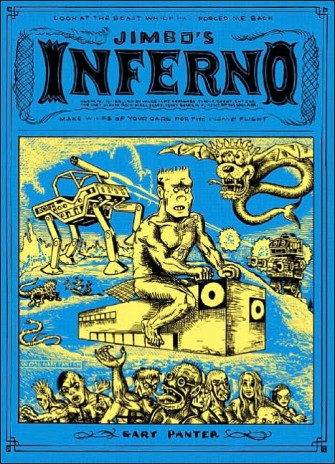 38 -- Jimbo's Inferno, Gary Panter, Fantagraphics
38 -- Jimbo's Inferno, Gary Panter, Fantagraphics
The first in the recent great run of Panter works, now collected: a mystifying set of symbols and tableaux that you can ignore altogether for the acerbic point of view and incredible page design.
*****
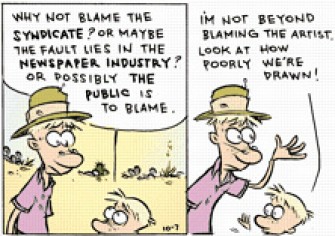 37 -- Little Fibbs, Hollis Brown and Wes Hargis, King Features Syndicate
37 -- Little Fibbs, Hollis Brown and Wes Hargis, King Features Syndicate
One of the two or three best failed newspaper strips of the last 25 years,
Franklin Fibbs/
Little Fibbs ended with an appropriately self-deprecating series of cartoons mocking among other things their own desperate, mid-runswitch from old man to little kid protagonists. A strip never got more creative energy out of giving the finger to years of traditional panel rhythms and writing cliches, and I'll miss it.
*****
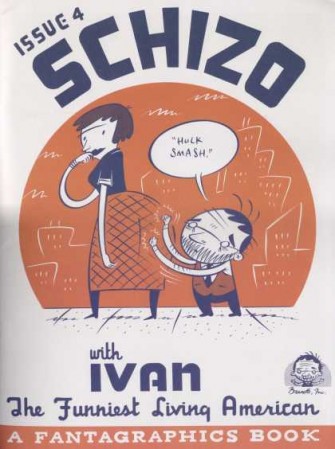 36 -- Schizo #4, Ivan Brunetti, Fantagraphics
36 -- Schizo #4, Ivan Brunetti, Fantagraphics
A lot less furiously desperate in the telling than was the case in past issues,
Schizo #4 is a worthy addition to the small but potent oeuvre of a cartoonist many of his peers consider, with good reason, one of the funniest and smartest ever to contribute to the art form. Brunetti also made the world's most annoying format look beautiful and well-considered.
*****
 35 -- Passionella, Jules Feiffer, Fantagraphics
35 -- Passionella, Jules Feiffer, Fantagraphics
A sterling collection of Jules Feiffer's mid-career comics works, mainly for magazines in the last great period of American feature article publishing, including such gems as the title story and a brutal dissection of Superman that should have and sadly didn't close the conversation on analysis of that pop culture icon. I think the most amazing thing about reading Feiffer is that in terms of cartooning history he was
so alone in what he was doing; in a world kinder towards comics output aimed at adults you can imagine entire schools and approaches in individual Feiffer stories, an industry that never was.
*****
 34 -- The Squirrel Mother by Megan Kelso, Fantagraphics
34 -- The Squirrel Mother by Megan Kelso, Fantagraphics
Kelso is our greatest working choreographer of cartoons, the way she makes her figures move and relate to one another while in conversation. She also possesses a fierce intellect that she applies to describing how we ascribe meaning to things just beyond ourselves, how we love those who are out of the room or completely out of our grasp.
*****
 33 -- Japan As Viewed by 17 Creators, Fanfare/Ponent Mon
33 -- Japan As Viewed by 17 Creators, Fanfare/Ponent Mon
Sturdy, frequently lovely and much more interesting for the sum of its parts and what it says about variations in artistic approach than its exploration of the subject matter.
*****
_thumb.jpg) 32 -- Editorial Cartoons, Tom Toles, Washington Post
32 -- Editorial Cartoons, Tom Toles, Washington Post
An editorial cartoonist at the height of his powers and, judging from the cartoon that brought on Toles' head the focused ire of the Joint Chiefs of Staff, an artist at the height of his influence as well.
*****
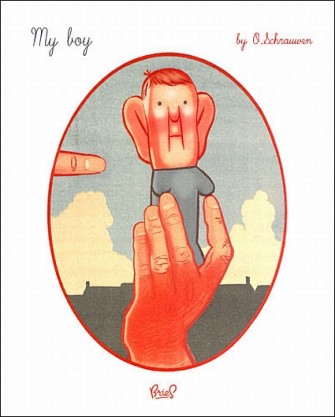 31 -- My Boy, Olivier Schrauwen, Bries
31 -- My Boy, Olivier Schrauwen, Bries
Even if the book's narrative didn't do it for you -- I found it delightful -- you had to admire the baroque presentational style ripped from comics more than 100 years old.
*****
 30 -- The Jean-Jacques Sempe Suite, Jean-Jacques Sempe, Phaidon
30 -- The Jean-Jacques Sempe Suite, Jean-Jacques Sempe, Phaidon
Sempe is the master of cartoons that depend on expanding context rather than serial progression, these four books (
Everything is Complicated,
Nothing is Simple,
Sunny Spells and
Mixed Messages), released at once as sort of a Sempe atomic bomb, comprise an assault on modern comics' over-dependency on set-ups and punchlines, and reveal a remarkably consistent cartoonist at opposite ends of his career.
*****
 29 -- Get a Life, Philippe Dupuy and Charles Berberian, Drawn and Quarterly
29 -- Get a Life, Philippe Dupuy and Charles Berberian, Drawn and Quarterly
The degree of difficulty in making a comic about the worries and trials of a successful, tether-less person is to enormous for me to think about. The grace with which certain periods in life and certain pleasures are depicted could in less skilled hands easily overwhelm the book's core, could punch past an entire world of sensation and experience to make a tawdry, summary point.
*****
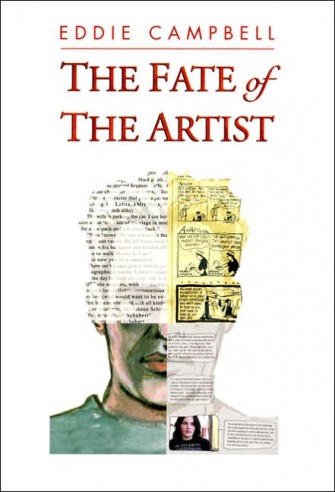 28 -- The Fate of the Artist, Eddie Campbell, First Second
28 -- The Fate of the Artist, Eddie Campbell, First Second
Playful and engaging, like the best late-night diner conversation about making art ever, Campbell rips through techniques and approaches in a way that makes the artist himself, despite his pen and ink doppelganger being absent from the storyline in a literal sense, the main character in a fascinating way.
*****
 27 -- Abandon the Old In Tokyo, Yoshihiro Tatsumi, Drawn & Quarterly
27 -- Abandon the Old In Tokyo, Yoshihiro Tatsumi, Drawn & Quarterly
Having basically invented his own genre, Yoshihiro Tatsumi's stories collected in D&Q's second of three volumes of his work could have been self-satisfied exercises in staking out appropriate theme work and laying claim to certain subject matter. Instead, the stories here pulsate with the kind of bewildered, emotional intensity that connects these short stories to all great art, an unblinking look at the forces that cause us to act in ways against our more obvious interests.
*****
 26 -- Ganges, Kevin Huizenga, Fantagraphics/Coconino
26 -- Ganges, Kevin Huizenga, Fantagraphics/Coconino
The surprise of the year's first few weeks, the beneficiary of both the best new format innovation since 1993 in the over-sized Ignatz book and the sudden rush of realizing a major talent had emerged; the stories hold up as well, including the story "Glenn in Bed" and its protagonist worrying over mortality and love in the context of untold millions of couples in bed together throughout history, a conceit that in a less assured artist's hands might have been overbearing and precious.
*****
 25 -- Kramers Ergot Vol. 6, Sammy Harkham, Buenaventura Press
25 -- Kramers Ergot Vol. 6, Sammy Harkham, Buenaventura Press
A suddenly mature issue so confident that many people strangely took its lack of awkwardness and incompleteness as a sign this was less exciting than past issues. The sheer number of quality comics on display, and the variation in approaches that Harkham encourages, will make this the volume readers will return to years from now.
*****
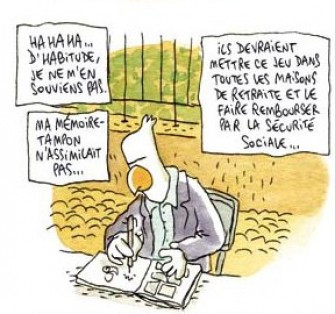 24 -- Les Petits Riens, Lewis Trondheim, Self-Published (On-Line)
24 -- Les Petits Riens, Lewis Trondheim, Self-Published (On-Line)
Beautifully water-colored and always well-observed, there has never been a comic more suited to its specific on-line presentation.
*****
 23 -- Ninja, Brian Chippendale, PictureBox Inc.
23 -- Ninja, Brian Chippendale, PictureBox Inc.
Both this year's great art object and its most revealing meditation on the nature of comics.
*****
 22 -- Ghost of Hoppers, Jaime Hernandez, Fantagraphics
22 -- Ghost of Hoppers, Jaime Hernandez, Fantagraphics
The horror sequences, particularly a dog that lumbers toward a drunk, young Maggie, are as effectively staged as anything Jaime Hernandez has ever drawn. I don't know if anything the artist will do at this point will connect with readers the way his stories of teenaged lust and longing and self-identity managed to, but this is a somber, measured and ultimately optimistic reverie on getting older that should grow in reputation in years to come.
*****
 21 -- An Anthology of Graphic Fiction, Cartoons and True Stories, Ivan Brunetti, Yale University Press
21 -- An Anthology of Graphic Fiction, Cartoons and True Stories, Ivan Brunetti, Yale University Press
A tastefully selected tribute to the comics short story poignant for its release in a graphic novel age.
*****
_thumb.jpg) 20 -- The Great Outdoor Fight, Achewood, Chris Onstad, Self-Published (On-Line)
20 -- The Great Outdoor Fight, Achewood, Chris Onstad, Self-Published (On-Line)
The forceful confidence Onstad brought to this storyline as it descended into madness was awe-inspiring. I've read strips where I didn't know what was going to happen next week, but I've rarely read one that had me guessing as to the content of the next panel.
*****
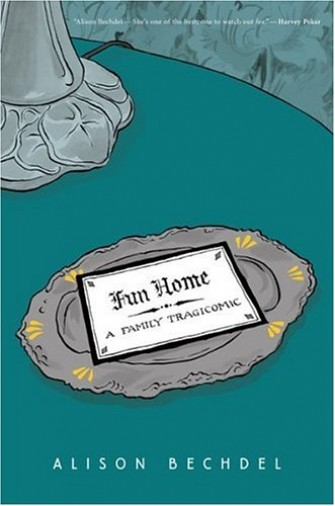 19 -- Fun Home, Alison Bechdel, Houghton-Mifflin
19 -- Fun Home, Alison Bechdel, Houghton-Mifflin
Precise, lovely and humane, it shares with
Maus and
Persepolis a similar author's confidence and clarity of vision that when launched into the open marketplace made it a hit with wide swath of readers.
*****
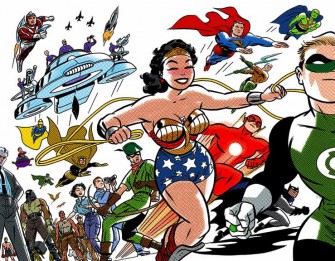 18 -- Absolute DC: The New Frontier, Darwyn Cooke, DC Comics
18 -- Absolute DC: The New Frontier, Darwyn Cooke, DC Comics
If
The Dark Knight Returns was the last word in American superhero comics and
Watchmen its death rattle,
New Frontier is the final moment of clarity before the light leaves its eyes.
*****
 17 -- Billy Hazelnuts, Tony Millionaire, Fantagraphics
17 -- Billy Hazelnuts, Tony Millionaire, Fantagraphics
A book that feels like every copy should be taken off shelves and hidden in attics all over the world for playing kids to discover and treasure, and maybe the easiest narrative to get lost in all year.
*****
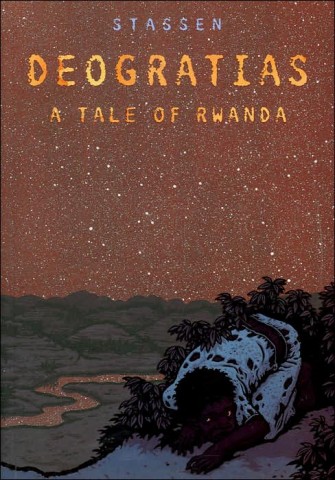 16 -- Deogratias, JP Stassen, First Second
16 -- Deogratias, JP Stassen, First Second
Likely
the great surprise of 2006: a story of how the horrors of a destabilized society can rip someone's humanity to shreds, told without making overwrought claims on behalf of the society that existed beforehand or for those who ended up suffering the most.
*****
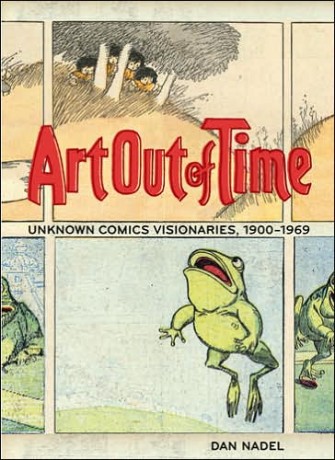 15 -- Art Out of Time, Dan Nadel, Harry Abrams
15 -- Art Out of Time, Dan Nadel, Harry Abrams
The most joyful and funny of a great year in anthologies, possessed of a unique point of view: what happened to all of the outsider art before there was an outside, alternative or underground? It found expression in the mainstream, of course.
*****
 14 -- The ACME Novelty Library Vol. 17, Chris Ware, Self-Published
14 -- The ACME Novelty Library Vol. 17, Chris Ware, Self-Published
A first day of school with all of the false vibrancy in similar dramatic depictions drained into the floorboards, where the cartoonist's measured pacing works in perfect concert with an increasingly beautiful line.
*****
 13 -- Moomin: The Complete Tove Jannson Comic Strip Book One, Tove Jaanson, Drawn and Quarterly
13 -- Moomin: The Complete Tove Jannson Comic Strip Book One, Tove Jaanson, Drawn and Quarterly
The sign of its greatness is that there's nothing else like and yet it's familiar, like the greatest achievement from a whole class of 1950s and 1960s illustration-inspired cartooning that never found purchase anywhere else.
*****
 12 -- The Complete Peanuts (series), Charles Schulz, Fantagraphics
12 -- The Complete Peanuts (series), Charles Schulz, Fantagraphics
Prime-time
Peanuts with any number of attendant joys to be found in the telling.
*****
 11 -- Walt & Skeezix Book 2, Frank King, Drawn and Quarterly
11 -- Walt & Skeezix Book 2, Frank King, Drawn and Quarterly
Still at this age raw and beautiful and surprisingly tender in a way that previous glimpses hadn't prepared us for and volume one had left us too stunned to hope for more.
*****
 10 -- The Times of Botchan (series), Jiro Taniguchi, Natsuo Sekikawa, Fanfare/Ponent Mon
10 -- The Times of Botchan (series), Jiro Taniguchi, Natsuo Sekikawa, Fanfare/Ponent Mon
The first few chapters of one of the best comics ever and one of the most uniquely told, with sterling craft and precision.
*****
 9 -- Curses, Kevin Huizenga, Drawn & Quarterly
9 -- Curses, Kevin Huizenga, Drawn & Quarterly
A collection of the best work to date from the most important cartoonist to emerge since Chris Ware, the comics here are precise, soulful and extraordinarily kind.
*****
_thumb.jpg) 8 -- Don't Go Where I Can't Follow, Anders Nilsen
8 -- Don't Go Where I Can't Follow, Anders Nilsen
A comic about grief and about art as a way to process grief; also the story of relationship told in its less than extraordinary moments. I found this comic perfectly pitched and restrained and, ultimately, heartbreaking.
*****
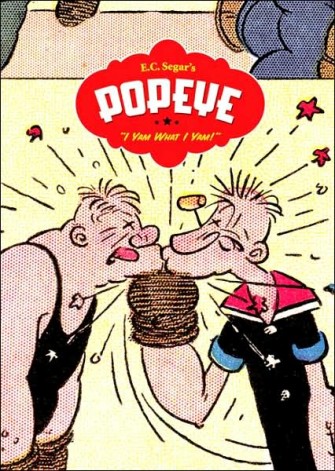 7 -- Popeye Volume One: I Yam What I Yam, EC Segar, Fantagraphics
7 -- Popeye Volume One: I Yam What I Yam, EC Segar, Fantagraphics
The welcome return of an old friend, and a prelude to even better comics to come.
*****
 6 -- Ode to Kirihito, Osamu Tezuka, Vertical
6 -- Ode to Kirihito, Osamu Tezuka, Vertical
Storytelling mastery in service of a wild, improbable soap opera, with sideways steps into beautiful religious imagery and portraits of the human condition. The plot resembles a medical drama that careens into everything from action-adventure to horror, all told through Osamu Tezuka's great skill in creating effects whole cloth on the comics page, like a director that holds his own camera and improvises on set. There's nothing like it out there, and if you read it a dozen times I'm not sure you'll penetrate to the roots of the author's inquiry.
*****
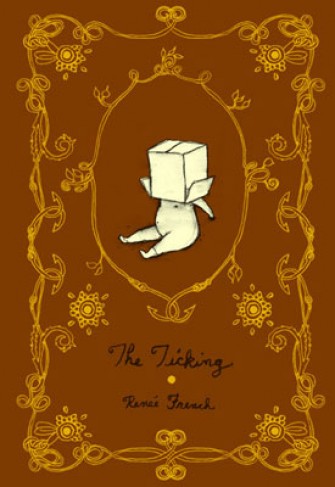 5 -- The Ticking, Renee French, Top Shelf
5 -- The Ticking, Renee French, Top Shelf
By far the best work of Renee French's career, in
The Ticking she pushes the more sublime qualities of her picture-making into an array of effects more complex and eventually more satisfying than simply grossing the reader out. The story of an artist and his relationship with his father,
The Ticking reflects our own, troubled life stories in that what happens is very specific while what it means is largely determinant on what we're determined to make of it.
*****
 4 -- Shadowland, Kim Deitch, Fantagraphics
4 -- Shadowland, Kim Deitch, Fantagraphics
A comic that jumped up from the weeds for many of his longtime readers, a darker counterpart to Deitch's
Mishkin Saga that emphasizes the show business that preceded early animation and the business of nostalgia and historical inquiry that sprung up some years after that not-so-golden age. Deitch creates worlds of grotesques and then imbues them with a humanity based on their frequent, touching inability to ride roughshod over their more human desires; here he works even more gracefully with the inevitability of aging and regret.
*****
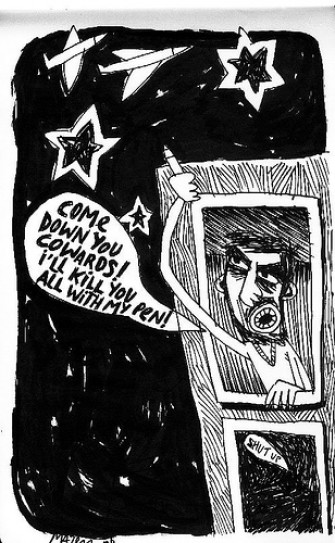 3 -- Kerblog, Mazen Kerbaj, Self-Published (On-Line)
3 -- Kerblog, Mazen Kerbaj, Self-Published (On-Line)
No other comic this past year had me as emotionally involved on a day to day basis as the comics of Mazen Kerbaj. Dispatches from a cartoonist in Beirut during the military attack by the state of Israel last summer, the frustration and disgust and fear and instability caused by the untenable situation fairly vibrated on the computer screen, single images of jagged faces wrecked with stress, or tableau designed to make a very specific point about family, safety and community. I don't know that it will hold anywhere near the same power collected or revisited that it had as an unfolding story, but in that extended moment it was an amazing reading experience.
*****
 2 -- Krazy & Ignatz 1937-1938: Shifting Sands Dusts its Cheeks in Powdered Beauty, George Herriman, Fantagraphics
2 -- Krazy & Ignatz 1937-1938: Shifting Sands Dusts its Cheeks in Powdered Beauty, George Herriman, Fantagraphics
I don't have anything new to say about
Krazy Kat except that I find it beautiful and funny all over again every time I read it.
*****
 1 -- Kampung Boy, Lat, First Second
Town Boy
1 -- Kampung Boy, Lat, First Second
Town Boy may be a more sophisticated book, and a powerful scene or two in this book may have been excised between the earliest versions and the 2007 English-language edition from First Second. I still can't get past this story's beautiful tone, judiciously selected scene work, and the humane vision of a world that express itself in every aspect of its design and staging. Lat's classic comic captures all of the vibrancies with which children imbue their immediate surroundings, and the unimaginable, almost impossible to express joy of new discoveries and first friendships. I wish there 100 comics like it, and I'm overjoyed to have the one.
posted 2:57 am PST |
Permalink
Daily Blog Archives
November 2019
October 2019
September 2019
August 2019
July 2019
Full Archives


